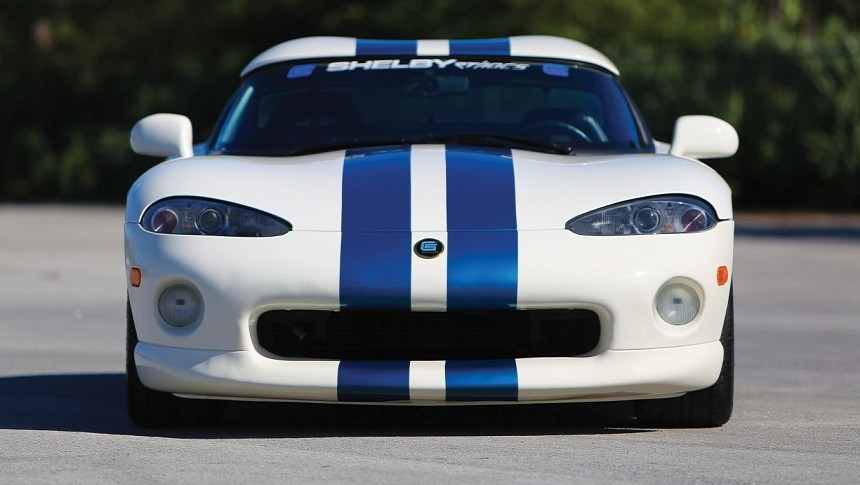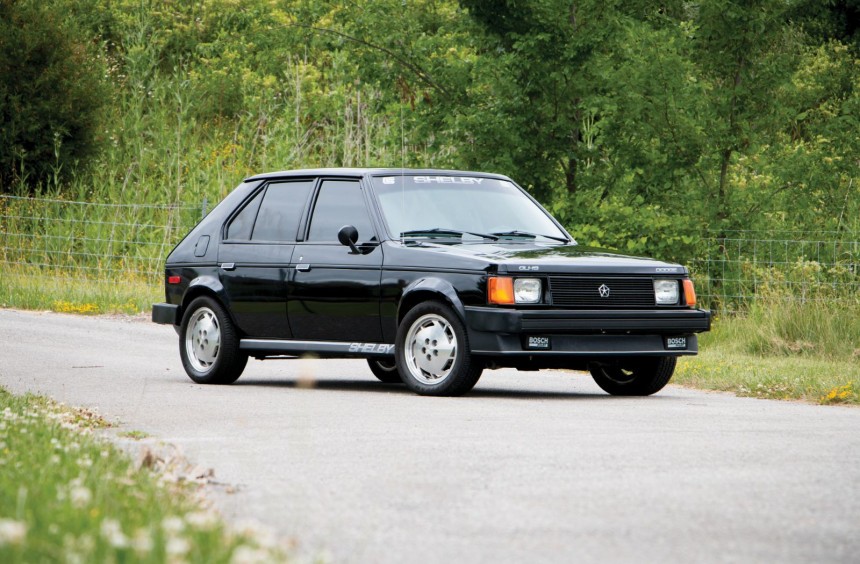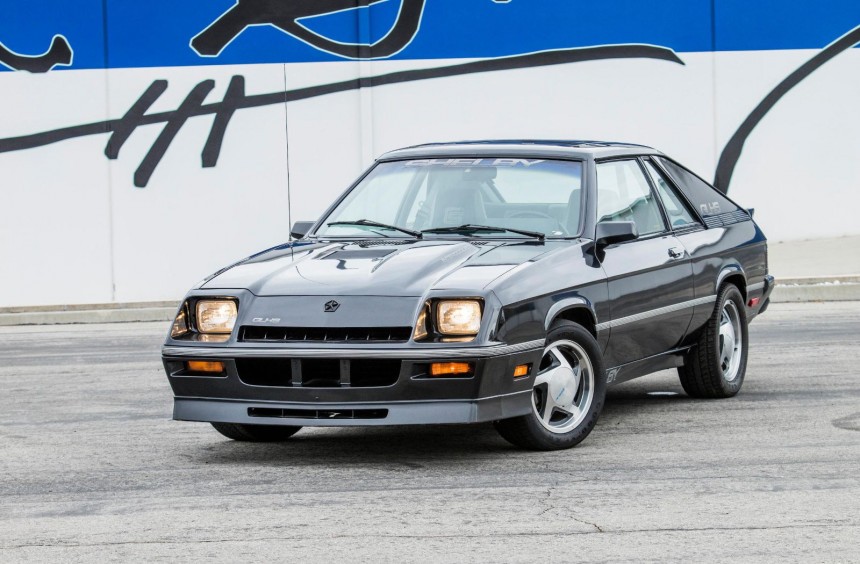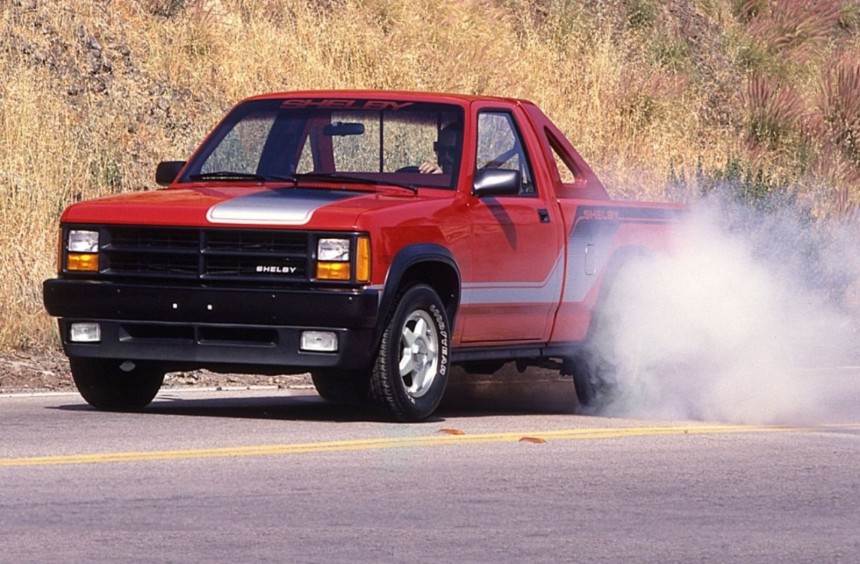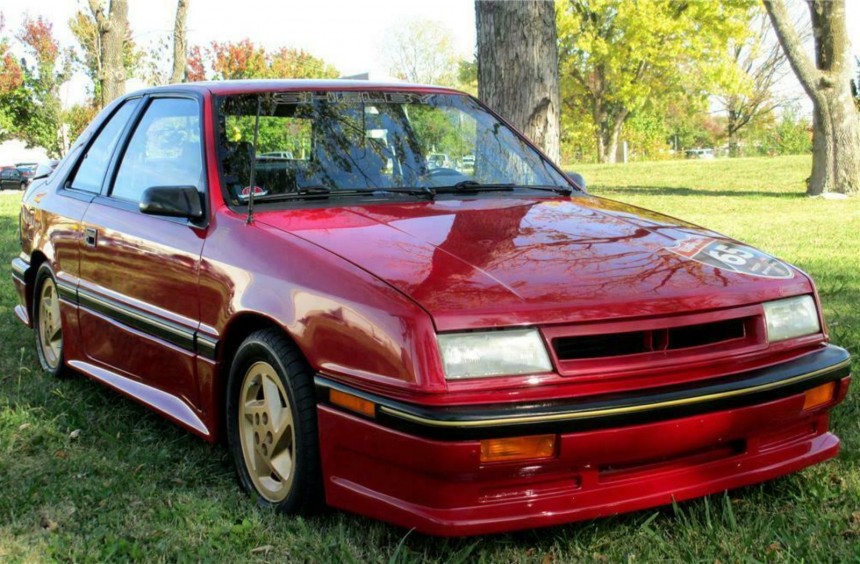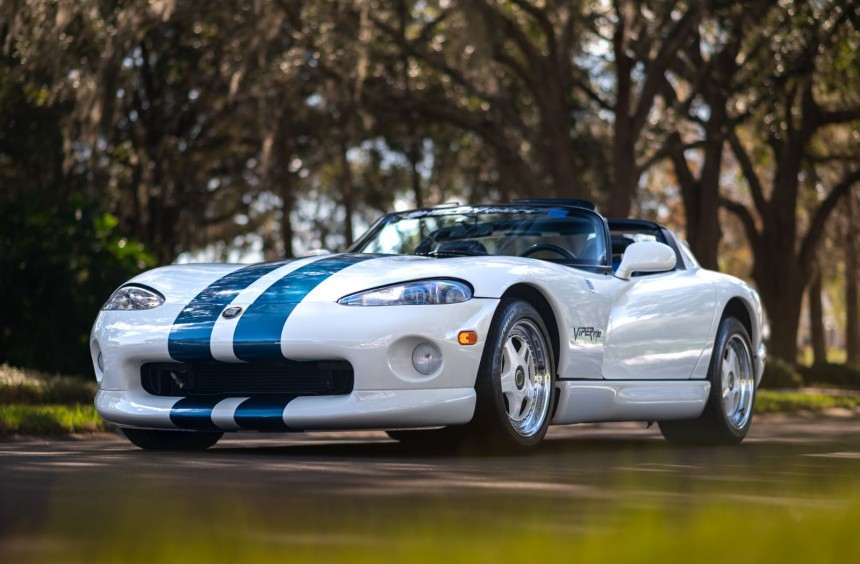The legendary Carroll Shelby is best remembered for his time at Ford, where he helped develop the Le Mans-winning GT40 and the epic Shelby Mustang muscle cars. However, he also worked with Chrysler during the 1980s and 1990s, transforming regular Dodges into exciting performance models.
Born on January 11, 1923, in Leesburg, Texas, Carroll Hall Shelby was fascinated by speed from an early age. After he moved to Dallas at age 7, he frequently rode his bike (as fast as he could) to local tracks, where he spent most of his free time watching races.
During his teenage years, he started driving and working on his dad's Ford, but as he became a young adult, Shelby pursued a military pilot career. He ended up serving as a flight instructor and test pilot, but after the war, he started his own dump truck business, worked as an oil-well roughneck for about a year, then as a poultry farmer. He didn't succeed in any of those ventures, and by the time he was in his late twenties, Shelby decided to pursue his dream of becoming a race driver.
He started racing on the amateur circuit but shortly went pro. His biggest achievement came in 1959 when he won the famed 24 Hours of Le Mans in an Aston Martin DBR1/300 that he co-drove with Roy Salvadori.
Shelby was forced to cut his race driver career short after the 1959 season due to health issues, but he remained active in the world of motorsport by founding Shelby American in 1962. We all know what happened next: he developed the legendary Shelby Cobra, then began working with Ford, turning the GT40 project into a Le Mans-winning race car. He also designed the GT350 and GT500, two of the most sought-after, high-performance versions of the first-generation Mustang.
After cutting ties with the Blue Oval, Shelby focused on running his own company, but during the 1980s, at the request of long-time friend and former Ford vice-president Lee Iacocca, who became CEO of the Chrysler Corporation, he helped create some high-performance Dodge models, including the five we're going to remember below.
Introduced in 1978, the Omni is probably the most forgettable Dodge ever created. A small FWD hatchback designed to rival similar imports, it was powered by a series of boring inline-fours.
However, inspired by the success of Volkswagen's performance-oriented Golf GTI, Dodge management decided to create a performance version based on the Omni and asked Carroll Shelby for help.
Launched in 1984, the result of Shelby's involvement was a limited-edition model dubbed GLH (short for Goes Like Hell). Though the name was a severe overstatement, Dodge's hot hatch was available with either a 2.2-liter naturally-aspirated inline-four good for 110 hp or an optional turbocharged version (GLH-T) rated at 146 hp.
In 1986, Shelby's company purchased the last 500 Omni GLH-T units, transforming them into a a trully rabid hot hatch called Shelby GLHS ("Goes Like Hell S'more"). These cars received extensive suspension and engine modifications resulting in an output of 175 hp and 175 lb-ft (237 Nm) of torque.
In terms of performance, the Omni GLH-S could accelerate from 0 to 60 mph (97 kph) in 6.5 seconds and achieve a top speed of 135 mph (217 kph). These figures made it sensibly faster than the Golf GTI 16v.
A year before Dodge launched the performance-oriented Omni, it called upon Carroll Shelby to help make the Charger nameplate great again.
Worlds apart from the HEMI-powered muscle car of the late-1960s, the Dodge Shelby Charger only benefited from a suspension revamp and some exterior styling. Under the hood, it is a 107-hp inline-four, so even if it handled a bit better than the standard model, it was still not worthy of barring the Charger nameplate.
As with the Omni GLH-S, Shelby purchased the last batch of Chargers (this time 1,000 units) and transformed them into something much more spectacular.
Enter the all-black Shelby Charger GLH-S, a thoroughly modified performance version that featured Koni adjustable shocks, Centurion 2 wheels wrapped in Goodyear Eagle GT Z-rated rubber, and a 2.2-liter turbocharged inline-four similar to that of the Omni GLH-S.
Also rated at 175 hp and 175 lb-ft (237 Nm) of torque, it could do the 0- 60 mph (97 kph) sprint in 7.3 seconds on its way to a top speed of (139 mph (224 kph).
Though it was still far from the Chargers of old, the GLH-S was a huge improvement over the stock Dodge Shelby Charger, giving buyers a thrilling US-built model during a depressing era of underpowered people movers.
Dodge was no stranger to building performance trucks since they developed the first one back in 1978. Called Li’l Red Express, it combined the practicality of a pickup truck with high-powered V8 muscle, becoming a timeless legend.
Eleven years later, the company decided to employ that winning formula once again on the first generation of the mid-size Dakota and approached Carroll Shelby to help develop it.
Based on the short-bed, standard-cab version of the truck, the Shelby Dakota had it's original V6 swapped with a 5.2-liter V8 that made 175 hp and received some visual enhancements, including a two-tone paint scheme.
This version of the Dakota had the distinction of being the first V8-powered RWD Shelby vehicle in over 20 years. For a brief period, it was also the most powerful performance truck on the market and the second most powerful ever built, behind the Li’l Red Express.
Part of a limited-production run of 1,500 units, this Dakota was modified at Shelby's facility in California and was marketed without the Dodge name.
Another small performance Shelby was the Dodge Shadow-based Shelby CSX (Carroll Shelby eXperimental) which debuted in 1987.
The first version was powered by an intercooled 2.2-liter Turbo II inline-four, producing 175 hp and 175 lb-ft (237 Nm) of torque. It also featured suspension improvements which made it far more exciting than its standard counterpart.
In 1989, Dodge and Shelby unveiled an improved version dubbed Shelby CSX-VNT, the last Shelby-badged Dodge ever produced. It was a proper send-off that exceeded expectations and gave US buyers one of the most exciting yet underrated performance vehicles of the 1980s.
The three-door hatchback was equipped with the latest Turbo IV engine linked to a Getrag A555 5-speed manual. Rated at 175 hp and 205 lb-ft (278 Nm) of torque, the four-cylinder featured a Garrett variable-nozzle turbo (VNT). This made the CSX-VNT the first production car to employ variable turbine technology, which drastically decreased turbo lag and improved performance.
The CSX-VNT was also the first production car to feature wheels made out of a plastic composite that made them lighter than alloys. Apart from that, the car was equipped with a unique body kit, revised suspension components, and some received Recaro bucket seats.
The VNT was produced in 500 examples, including one prototype, and out of all the Shelby-badged Dodges, it's by far the most collectible today.
Undoubtedly Caroll Shelby's most important contribution during his Dodge years was helping develop the Viper. First introduced in pre-production form at the 1991 Indy 500 with Shelby himself behind the wheel, the Viper marked the American automotive industry's return to true high performance and became one of the most iconic supercars of the 1990s.
In 1996, Shelby teamed up with old friend Dan Fitzgerald to create a special edition of the Viper. Modified by Dan's company, Fitzgerald Motorsports, the CS (Carroll Shelby) special edition featured exterior improvements like a Cobra–style front grille, a rear spoiler, custom wheels, and a body-colored composite hardtop.
On the mechanical side, the CS received a heavy-duty suspension system and a rear axle gear ratio swap to 3:73 to 1. Under the hood, it gained a free flow air filter, a custom exhaust, and high-performance ignition wires, upgrades that pushed the formidable 8.0-liter V10 to 435 hp, 35 more than the standard-spec engines.
Only 50 units of the Viper RT/10 CS were developed, most of which were finished in Wimbledon white with blue stripes. They are highly collectible today, demanding around $150,000.
During his teenage years, he started driving and working on his dad's Ford, but as he became a young adult, Shelby pursued a military pilot career. He ended up serving as a flight instructor and test pilot, but after the war, he started his own dump truck business, worked as an oil-well roughneck for about a year, then as a poultry farmer. He didn't succeed in any of those ventures, and by the time he was in his late twenties, Shelby decided to pursue his dream of becoming a race driver.
He started racing on the amateur circuit but shortly went pro. His biggest achievement came in 1959 when he won the famed 24 Hours of Le Mans in an Aston Martin DBR1/300 that he co-drove with Roy Salvadori.
Shelby was forced to cut his race driver career short after the 1959 season due to health issues, but he remained active in the world of motorsport by founding Shelby American in 1962. We all know what happened next: he developed the legendary Shelby Cobra, then began working with Ford, turning the GT40 project into a Le Mans-winning race car. He also designed the GT350 and GT500, two of the most sought-after, high-performance versions of the first-generation Mustang.
After cutting ties with the Blue Oval, Shelby focused on running his own company, but during the 1980s, at the request of long-time friend and former Ford vice-president Lee Iacocca, who became CEO of the Chrysler Corporation, he helped create some high-performance Dodge models, including the five we're going to remember below.
1986 Shelby Omni GLH-S
However, inspired by the success of Volkswagen's performance-oriented Golf GTI, Dodge management decided to create a performance version based on the Omni and asked Carroll Shelby for help.
Launched in 1984, the result of Shelby's involvement was a limited-edition model dubbed GLH (short for Goes Like Hell). Though the name was a severe overstatement, Dodge's hot hatch was available with either a 2.2-liter naturally-aspirated inline-four good for 110 hp or an optional turbocharged version (GLH-T) rated at 146 hp.
In 1986, Shelby's company purchased the last 500 Omni GLH-T units, transforming them into a a trully rabid hot hatch called Shelby GLHS ("Goes Like Hell S'more"). These cars received extensive suspension and engine modifications resulting in an output of 175 hp and 175 lb-ft (237 Nm) of torque.
In terms of performance, the Omni GLH-S could accelerate from 0 to 60 mph (97 kph) in 6.5 seconds and achieve a top speed of 135 mph (217 kph). These figures made it sensibly faster than the Golf GTI 16v.
1987 Shelby Charger GLH-S
Worlds apart from the HEMI-powered muscle car of the late-1960s, the Dodge Shelby Charger only benefited from a suspension revamp and some exterior styling. Under the hood, it is a 107-hp inline-four, so even if it handled a bit better than the standard model, it was still not worthy of barring the Charger nameplate.
As with the Omni GLH-S, Shelby purchased the last batch of Chargers (this time 1,000 units) and transformed them into something much more spectacular.
Enter the all-black Shelby Charger GLH-S, a thoroughly modified performance version that featured Koni adjustable shocks, Centurion 2 wheels wrapped in Goodyear Eagle GT Z-rated rubber, and a 2.2-liter turbocharged inline-four similar to that of the Omni GLH-S.
Also rated at 175 hp and 175 lb-ft (237 Nm) of torque, it could do the 0- 60 mph (97 kph) sprint in 7.3 seconds on its way to a top speed of (139 mph (224 kph).
Though it was still far from the Chargers of old, the GLH-S was a huge improvement over the stock Dodge Shelby Charger, giving buyers a thrilling US-built model during a depressing era of underpowered people movers.
1989 Shelby Dakota
Eleven years later, the company decided to employ that winning formula once again on the first generation of the mid-size Dakota and approached Carroll Shelby to help develop it.
Based on the short-bed, standard-cab version of the truck, the Shelby Dakota had it's original V6 swapped with a 5.2-liter V8 that made 175 hp and received some visual enhancements, including a two-tone paint scheme.
This version of the Dakota had the distinction of being the first V8-powered RWD Shelby vehicle in over 20 years. For a brief period, it was also the most powerful performance truck on the market and the second most powerful ever built, behind the Li’l Red Express.
Part of a limited-production run of 1,500 units, this Dakota was modified at Shelby's facility in California and was marketed without the Dodge name.
1989 Shelby CSX-VNT
The first version was powered by an intercooled 2.2-liter Turbo II inline-four, producing 175 hp and 175 lb-ft (237 Nm) of torque. It also featured suspension improvements which made it far more exciting than its standard counterpart.
In 1989, Dodge and Shelby unveiled an improved version dubbed Shelby CSX-VNT, the last Shelby-badged Dodge ever produced. It was a proper send-off that exceeded expectations and gave US buyers one of the most exciting yet underrated performance vehicles of the 1980s.
The three-door hatchback was equipped with the latest Turbo IV engine linked to a Getrag A555 5-speed manual. Rated at 175 hp and 205 lb-ft (278 Nm) of torque, the four-cylinder featured a Garrett variable-nozzle turbo (VNT). This made the CSX-VNT the first production car to employ variable turbine technology, which drastically decreased turbo lag and improved performance.
The CSX-VNT was also the first production car to feature wheels made out of a plastic composite that made them lighter than alloys. Apart from that, the car was equipped with a unique body kit, revised suspension components, and some received Recaro bucket seats.
The VNT was produced in 500 examples, including one prototype, and out of all the Shelby-badged Dodges, it's by far the most collectible today.
1996 Dodge Viper RT/10 CS
In 1996, Shelby teamed up with old friend Dan Fitzgerald to create a special edition of the Viper. Modified by Dan's company, Fitzgerald Motorsports, the CS (Carroll Shelby) special edition featured exterior improvements like a Cobra–style front grille, a rear spoiler, custom wheels, and a body-colored composite hardtop.
On the mechanical side, the CS received a heavy-duty suspension system and a rear axle gear ratio swap to 3:73 to 1. Under the hood, it gained a free flow air filter, a custom exhaust, and high-performance ignition wires, upgrades that pushed the formidable 8.0-liter V10 to 435 hp, 35 more than the standard-spec engines.
Only 50 units of the Viper RT/10 CS were developed, most of which were finished in Wimbledon white with blue stripes. They are highly collectible today, demanding around $150,000.
